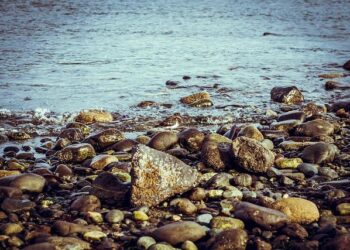In a world marked by the constant hustle and bustle of urban life, there exist communities that defy the norms of settled existence, embracing a lifestyle that revolves around perpetual movement.
These enigmatic groups, often called nomads, have a rich history of following traditional lifestyles, and many of them still live as nomads all around the world.
What Are Nomads?
Nomads are communities of people who continually move (usually seasonally) rather than live in a permanent settlement.
Experts believe the nomadic lifestyle started approximately 12,000 years ago, and they estimate that currently, there are 30 to 40 million nomads worldwide.
What Are the Different Types of Nomadic People?
Nomads come in various forms, each with their unique way of living and cultural practices. Historically, there have been three different types of nomadic people:
Hunter and Gatherer Nomads
Historically, nomadic hunter-gatherers are among the earliest human societies. They rely on hunting animals and gathering wild plants, rather than settling in one place and practicing agriculture. Hunter and gatherer nomads move frequently to follow the migrations of game sources and the seasonal availability of plants. Traditionally, they lived in small, mobile groups and had a deep knowledge of their environment.
Pastoral Nomads
Pastoral nomads raise livestock such as cattle, sheep, goats or camels. They move with their herds in search of grazing land and water sources. This lifestyle is often found in arid and semi-arid regions where agriculture is challenging. Pastoral nomads have a strong connection to their animals, which provide them with food, clothing and transportation.
Peripatetic Nomads (Trader or Tinker Nomads)
Peripatetic nomads are a diverse group that includes communities like the Romani people and Irish Travellers. They are characterized by their constant movement, not necessarily tied to agriculture or herding. Instead, they travel to trade goods, provide services or engage in various crafts. Their nomadic lifestyle often leads to a unique cultural identity and traditions, emphasizing adaptability and mobility.
Read More: 5 of the Most Isolated People on Earth
Nomadic Tribes That Still Exist Today
Although nomadism has changed and declined over time, there are still some tribes that are nomadic today. Of the many, here are four notable nomadic communities.
1. The Van Gujjars
(Credit:lightcraft73/Shutterstock)
Gujjar refers to a nomadic ethnic group found across Afghanistan, Pakistan and India. The Gujjars are broken up into several clans, one being the Van Gujjars.
The Van Gujjars are pastoral nomads who live in Uttarakhand, a state in Northern India among the Himalayas. They practice transhumance, the process of moving livestock to different areas according to the season. During the winter months, the Van Gujjars raise herds of buffalo in the lower valleys of the Himalayas. In the summer, they move their herds to alpine regions and sell milk and milk-based food products.
2. The Maasi
(Credit:Amy Nichole Harris/Shutterstock)
Living in parts of Kenya and northern Tanzania, the Maasi economy relies on cattle. Their cattle are a source of food — providing beef and milk. The animal hides are used to make clothes, sandals and the walls and roofs of their shelters. They use the bones and horns to make utensils and bowls.
The Maasai people are hunter and gatherer nomads who eat a very limited diet, primarily relying on their cattle for meat, milk and blood. Maasai warriors are known for their incredible jumping abilities, and their jumping dance has been part of their culture for centuries.
Read More: 7 Ancient Indigenous Inventions That Are Part of Our Lives Today
3. The Sami
(Credit:footageclips/Shutterstock)
With an estimated population of 50,000 to 100,000, the Sami People live in northern Sweden, Finland, Norway and the Kola Peninsula of Russia. For centuries, these hunter and gatherer nomads consisted of the coastal area Sami who engaged in trapping, fishing and farming while mountain-dwelling Sami hunted reindeer.
In the 17th century, they started domesticating the reindeer and became known for moving their herds between summer and winter pastures. Comprising only 10 percent of the Sami population, the herders continue this practice today — breeding reindeer for fur, transportation and meat. There are nine Sami languages, which are related but different. UNESCO considers all of these languages as endangered.
4. The Nukak
The Nukak are the last indigenous people of Colombia to have contact with the outside world. These nomadic hunter-gatherers avoided interaction with mainstream society until 1988, when a group of colonists in the town of Calamar found them.
That event was the beginning of the Nukaks’ dramatic devastation. They became exposed to the flu and pneumonia, illnesses they had no resistance to. They also lost much of their land through deforestation and/or being taken over by various guerrillas, armies and coca farmers. As of 2019, Colombia’s Constitutional Court declared that the Nukak were at “imminent risk of extinction,” with only several hundred Nukak remaining.
Read More: First Disappearance of Uncontacted Tribe – These Are The Threats Others Face
>>> Read full article>>>
Copyright for syndicated content belongs to the linked Source : Discover Magazine – https://www.discovermagazine.com/planet-earth/what-is-a-nomad-and-are-there-any-nomadic-tribes-that-still-exist































